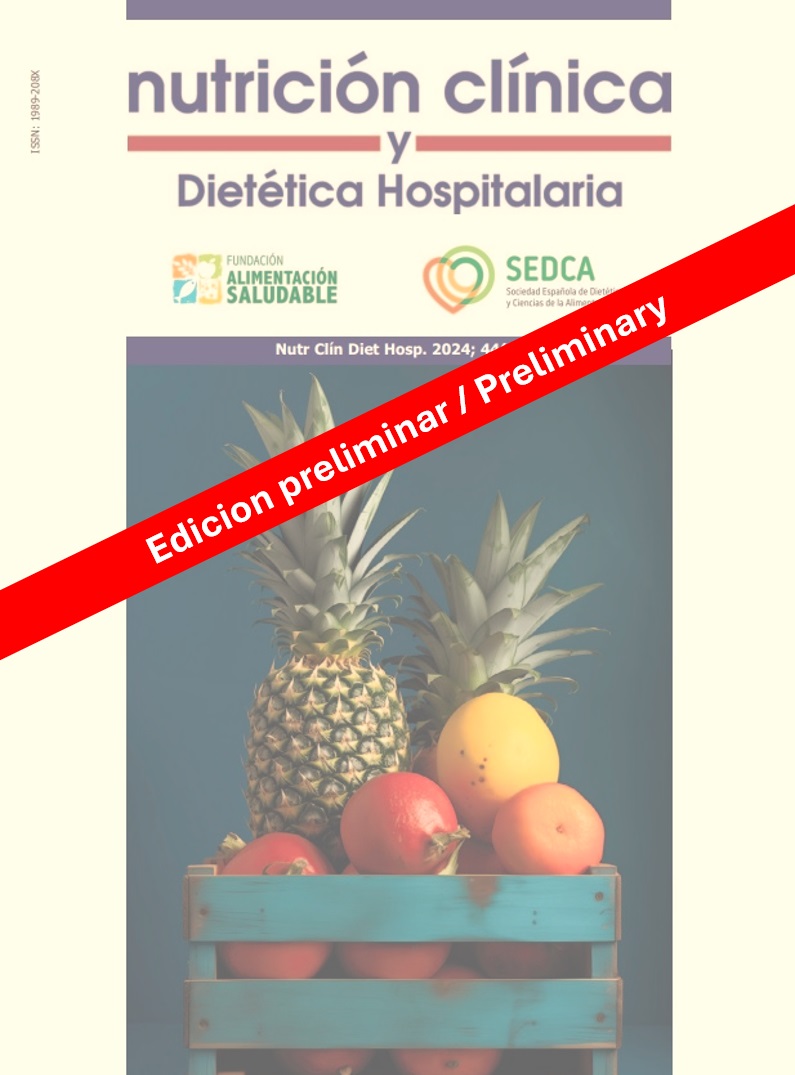Neuroprotective effect of Chenopodium pallidicaule flour (cañihuaco) suspension against ethanol toxicity in mice.
DOI:
https://doi.org/10.12873/451gomezherreraPalavras-chave:
Medicinal plant, neurodegeneration, glutathione, Chenopodium, miceResumo
Introduction: Foods play an important role in the prevention of several neurodegenerative diseases. Chenopodium pallidicaule flour (cañihuaco) is characterized by its phytonutrients content, among them polyphenols which have the potential to exert neuroprotective properties. Objective: is to evaluate the effect of the administration of cañihuaco suspension against ethanol toxicity in mice Materials and methods: Experimental design. 35 male mice were used, receiving the following treatments, for five days: groups I-II water 10mL/kg, groups III-V received cañihuaco at doses of 200mg/kg, 400mg/kg and 800mg/kg respectively. On the fifth day, 99% ethanol was administered subcutaneously, 5g/kg, except for group I. After four hours mice were sacrificed by decapitation. The brain and cerebellum were extracted, weighted, and stored for histological analysis. Biochemical indicators were determined in the right hemisphere. Results: Group III and IV showed higher tissue protein levels (p<0.05). Groups III-V showed higher levels of protein sulfhydryl groups being significant in group V (p<0.01). There was no difference in GSH levels in any treatment group with respect to group II. At the histological level, group V showed preservation of nervous tissue. Conclusion: The administration of Chenopodium pallidicaule (cañihuaco) flour suspension at doses of 200, 400, and 800 mg/kg exhibits a dose-dependent reduction in histological damage in the brain and cerebellum. Additionally, it enhances the levels of protein SH groups.
Referências
Thelen M, Brown-Borg HM. Does Diet Have a Role in the Treatment of Alzheimer’s Disease? Front Aging Neurosci [Internet]. 2020 [cited 2021 Aug 30];12:473. Available from: https://www.frontiersin.org/article/10.3389/fnagi.2020.617071 DOI: https://doi.org/10.3389/fnagi.2020.617071
Milošević M, Arsić A, Cvetković Z, Vučić V. Memorable Food: Fighting Age-Related Neurodegeneration by Precision Nutrition. Front Nutr [Internet]. 2021 [cited 2021 Aug 30];8:507. Available from: https://www.frontiersin.org/article/10.3389/fnut.2021.688086 DOI: https://doi.org/10.3389/fnut.2021.688086
Karvandi MS, Sheikhzadeh Hesari F, Aref AR, Mahdavi M. The neuroprotective effects of targeting key factors of neuronal cell death in neurodegenerative diseases: The role of ER stress, oxidative stress, and neuroinflammation. Front Cell Neurosci. 2023 Mar 6;17:1105247. DOI: https://doi.org/10.3389/fncel.2023.1105247
Peñarrieta JM, Alvarado JA, Åkesson B, Bergenståhl B. Total antioxidant capacity and content of flavonoids and other phenolic compounds in canihua (Chenopodium pallidicaule): An Andean pseudocereal. Mol Nutr Food Res. 2008;52(6):708–17. DOI: https://doi.org/10.1002/mnfr.200700189
Hernández-Sampieri, R. & Mendoza, C (2018). Metodología de la investigación. Las rutas cuantitativa, cualitativa y mixta | RUDICS [Internet]. [cited 2023 Dec 15]. Available from: https://virtual.cuautitlan.unam.mx/rudics/?p=2612
Festing MF. On determining sample size in experiments involving laboratory animals. Lab Anim [Internet]. 2018 Aug 1 [cited 2024 Jan 13];52(4):341–50. Available from: https://doi.org/10.1177/0023677217738268 DOI: https://doi.org/10.1177/0023677217738268
Palomino Sierra LA. Efecto neuroprotector del cocimiento de hojuelas de Chenopodium quinoa (quinua) variedad negra en ratones sometidos a daño por etanol [Internet]. Universidad Nacional Mayor de San Marcos; 2019. (Universidad Nacional Mayor de San Marcos). Available from: https://cybertesis.unmsm.edu.pe/handle/20.500.12672/10735
Béjar Camarena E. Efecto antioxidante del extracto hidroalcohólico de hojas de Jungia paniculata (dc.) A. Gray “matico serrano” en un modelo de daño gástrico en ratas inducido por etanol 70%. 2016.
Ellman GL. Tissue sulfhydryl groups. Arch Biochem Biophys. 1959 May;82(1):70–7. DOI: https://doi.org/10.1016/0003-9861(59)90090-6
Sedlak J, Lindsay RH. Estimation of total, protein-bound, and nonprotein sulfhydryl groups in tissue with Ellman’s reagent. Anal Biochem. 1968 Oct 24;25(1):192–205. DOI: https://doi.org/10.1016/0003-2697(68)90092-4
Suárez Cunza S. Actividad captadora de radicales libres y efecto antioxidante de metabolitos secundarios del extracto acuoso del Allium sativum var. Huaralino (ajo) en modelos in vitro. 2014. DOI: https://doi.org/10.37761/rsqp.v80i4.184
Reemplazo, reducción y refinamiento - PubMed. Available from: https://pubmed.ncbi.nlm.nih.gov/12098013/
Ruelas MG, Huamán-Gutierrez OG. Effect of Coturnix japonica (quail) egg yolk in ethanol damage-induced mice. Nutr Clínica Dietética Hosp [Internet]. 2023 Oct 2 [cited 2024 Mar 25];43(4). Available from: https://revista.nutricion.org/index.php/ncdh/article/view/441 DOI: https://doi.org/10.12873/434gallo
El Peruano - Ley de protección y bienestar animal - LEY - N° 30407 - PODER LEGISLATIVO - CONGRESO DE LA REPUBLICA. Available from: https://busquedas.elperuano.pe/normaslegales/ley-de-proteccion-y-bienestar-animal-ley-n-30407-1331474-1/
Grewal AK, Singh TG, Sharma D, Sharma V, Singh M, Rahman MdH, et al. Mechanistic insights and perspectives involved in neuroprotective action of quercetin. Biomed Pharmacother [Internet]. 2021 Aug 1 [cited 2021 Aug 27];140:111729. Available from: https://www.sciencedirect.com/science/article/pii/S0753332221005114 DOI: https://doi.org/10.1016/j.biopha.2021.111729
Allen EMG, Mieyal JJ. Protein-Thiol Oxidation and Cell Death: Regulatory Role of Glutaredoxins. Antioxid Redox Signal [Internet]. 2012 Dec 15 [cited 2024 Jan 13];17(12):1748–63. Available from: https://www.ncbi.nlm.nih.gov/pmc/articles/PMC3474186/ DOI: https://doi.org/10.1089/ars.2012.4644
Khan A, Ali T, Rehman SU, Khan MS, Alam SI, Ikram M, et al. Neuroprotective Effect of Quercetin Against the Detrimental Effects of LPS in the Adult Mouse Brain. Front Pharmacol [Internet]. 2018 Dec 11 [cited 2021 Jun 28];9:1383. Available from: https://www.frontiersin.org/article/10.3389/fphar.2018.01383/full DOI: https://doi.org/10.3389/fphar.2018.01383
Islam MdS, Quispe C, Hossain R, Islam MT, Al-Harrasi A, Al-Rawahi A, et al. Neuropharmacological Effects of Quercetin: A Literature-Based Review. Front Pharmacol [Internet]. 2021 [cited 2021 Aug 21];12:1533. Available from: https://www.frontiersin.org/article/10.3389/fphar.2021.665031 DOI: https://doi.org/10.3389/fphar.2021.665031
Hardie DG. AMPK and autophagy get connected. EMBO J [Internet]. 2011 Feb 16 [cited 2021 Aug 21];30(4):634–5. Available from: https://www.ncbi.nlm.nih.gov/pmc/articles/PMC3041958/ DOI: https://doi.org/10.1038/emboj.2011.12
Ojha S, Javed H, Azimullah S, Khair SBA, Haque ME. Neuroprotective potential of ferulic acid in the rotenone model of Parkinson’s disease. Drug Des Devel Ther [Internet]. 2015 Oct 7 [cited 2021 Aug 28];9:5499–510. Available from: https://www.dovepress.com/neuroprotective-potential-of-ferulic-acid-in-the-rotenone-model-of-par-peer-reviewed-fulltext-article-DDDT DOI: https://doi.org/10.2147/DDDT.S90616
Silva dos Santos J, Gonçalves Cirino JP, de Oliveira Carvalho P, Ortega MM. The Pharmacological Action of Kaempferol in Central Nervous System Diseases: A Review. Front Pharmacol [Internet]. 2021 [cited 2021 Aug 28];11:2143. Available from: https://www.frontiersin.org/article/10.3389/fphar.2020.565700 DOI: https://doi.org/10.3389/fphar.2020.565700
Ullah R, Ikram M, Park TJ, Ahmad R, Saeed K, Alam SI, et al. Vanillic Acid, a Bioactive Phenolic Compound, Counteracts LPS-Induced Neurotoxicity by Regulating c-Jun N-Terminal Kinase in Mouse Brain. Int J Mol Sci [Internet]. 2020 Dec 31 [cited 2021 Aug 29];22(1):361. Available from: https://www.ncbi.nlm.nih.gov/pmc/articles/PMC7795830/ DOI: https://doi.org/10.3390/ijms22010361
Park HA, Broman K, Stumpf A, Kazyak S, Jonas EA. Nutritional Regulators of Bcl-xL in the Brain. Molecules [Internet]. 2018 Nov 19 [cited 2021 Aug 29];23(11):3019. Available from: https://www.ncbi.nlm.nih.gov/pmc/articles/PMC6278276/ DOI: https://doi.org/10.3390/molecules23113019
Downloads
Publicado
Licença
Copyright (c) 2025 Nutrición Clínica y Dietética Hospitalaria

Este trabalho está licenciado sob uma licença Creative Commons Attribution-NonCommercial-NoDerivatives 4.0 International License.
Los lectores pueden utilizar los textos publicados de acuerdo con la definición BOAI (Budapest Open Access Initiative)







